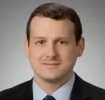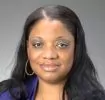The U.S. Court of Appeals for the Federal Circuit has ordered rehearing en banc in In re Bilski, No. 2007-1130 (Fed. Cir. Feb. 15, 2008) (order granting rehearing en banc) to determine the extent to which "business methods" are eligible for patent protection under U.S. law. The Federal Circuit's decision in Bilski could have significant implications regarding patent-eligible subject matter in the area of business methods. Indeed, the Court has indicated it might reconsider its landmark 1998 decision in, Inc., 149 F.3d 1368 (Fed. Cir. 1998), wherein the Court held there is no "business method" exception to patentable subject matter.
The hearing in In re Bilski is set for May 8, 2008, and amici briefs may be filed without leave of court on the following questions:
- Whether claim 1 of the 08/833,892 application [the Bilski application at issue] claims patent-eligible subject matter under 35 U.S.C. § 101(Section 101).
- What standard should govern in determining whether a process is patent-eligible subject matter under Section 101?
- Whether the claimed subject matter is not patent-eligible because it constitutes an abstract idea or mental process. When does a claim that contains both mental and physical steps create patent-eligible subject matter?
- Whether a method or process must result in a physical transformation of an article or be tied to a machine to be patent-eligible subject matter under Section 101.
- Whether it is appropriate to reconsider State Street Bank & Trust Co. v. Signature Financial Group, Inc., 149 F.3d 1368 (Fed. Cir. 1998), and AT&T Corp. v. Excel Communications, Inc., 172 F.3d 1352 (Fed. Cir. 1999) in this case and, if so, whether those cases should be overruled in any respect.
Claim 1 of the Bilski application relates to a method practiced by a commodity provider for managing (i.e., hedging) the consumption risks associated with a commodity sold at a fixed price. "Consumption risk" can refer to the need to use more or less energy due to the weather. The claim does not recite how the steps are implemented and are broad enough to read on performing the steps without any machine or apparatus.
The claims in Bilski thus differ from the claims in State Street Bank, which recognized the patentability of a method of transforming data representing discrete dollar amounts into a final share price. In State Street Bank, the claims did recite computer processor means, storage means, and other means corresponding to an arithmetic logic unit. In Bilski, no such computer, storage, or processor elements are recited.
Likewise, the Federal Circuit may reconsider its Excel decision. In Excel, the Federal Circuit found claims directed to a method for use in a telecommunications system to be patent-eligible subject matter. The method claim in the patent related to generating a message record and including in the message record an indicator of a "primary interexchange carrier." In Excel, the Federal Circuit referred to its en banc decision in In re Alappat, 33 F.3d 1526 (Fed. Cir. 1994), where the Federal Circuit provided its understanding of the Supreme Court's limitations on the patentability of mathematical subject matter:
Alappat, 33 F.3d at 1543 (emphasis added).
The Federal Circuit's Bilski order comes just after the Court's denial of rehearing en banc in In re Nuijten, No. 2006-1371 (Fed. Cir. Feb. 11, 2008) (order denying rehearing en banc), a case in which the Court upheld a rejection on subject matter grounds of claims directed to a signal that has been encoded in a particular manner.
The increasing controversy over business method patents has been brewing for the last few years as noted by several U.S. Supreme Court Justices in recent decisions. For example, in their concurring opinion in Ebay, Inc. v MercExchange, L.L.C., 126 S.Ct. 1837, 1842 (2006) (Kennedy, Stevens, Souter, Breyer concurring), four Justices pondered whether the availability of an injunction for infringement would be the same for business method patents as for patents covering other subject matter:
One month later, three of the same Justices dissented from the Court's dismissal of another appeal based on subject matter eligibility. In Laboratory Corp. of America Holdings v. Metabolite Laboratories, Inc., 126 S. Ct. 2921, 2928 (2006) (Breyer, Souter, Stevens dissenting). The dissenting Justices stated:
Therefore, applicants should keep apprised of the on-going formulation of the law of subject matter eligible under Section 101. Applicants with pending applications should include claims and detailed specification support to maximize their chances of success, no matter what the Federal Circuit decides.
Bilski continues the trend of Courts taking a closer look at significant areas of patent law. The Court's increased activity comes at the same time as increased involvement by other federal agencies such as the Federal Trade Commission's further involvement in company activities in conjunction with patent standards setting, and Congress' on-going consideration of patent reform. Companies must remain flexible and forward-looking in their patent strategies, both offensively and defensively.
View the Bilski order.
View the decision of the Board of Patent Appeals and Interferences.
The content of this article is intended to provide a general guide to the subject matter. Specialist advice should be sought about your specific circumstances.




